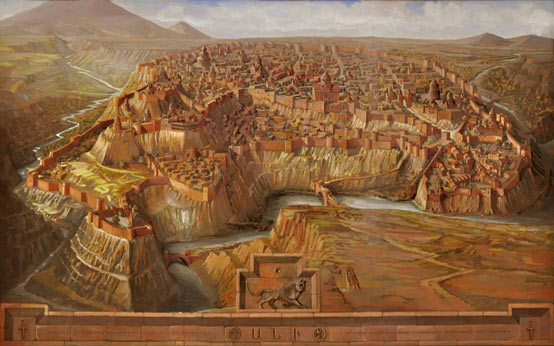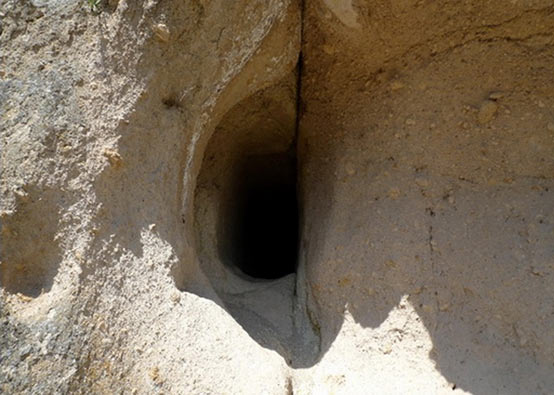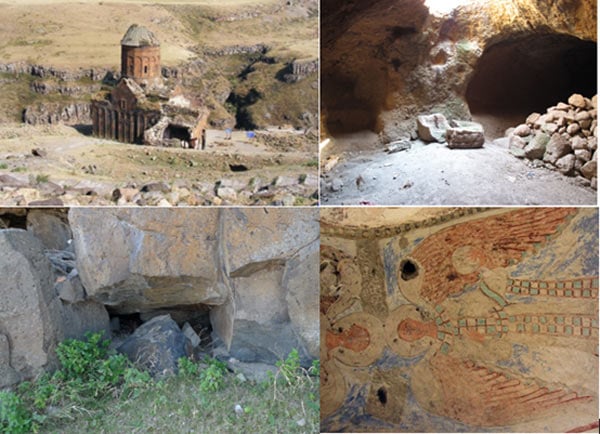Secret underground tunnels of ancient Mesopotamian cult under Ani ruins
For the first time in history, the academic world is paying attention to the spectacular underground world of Ani, a 5,000-year-old Armenian city located on the Turkish-Armenian border. Hurriyet Daily News reports that scientists, academics, and researchers have just met at a symposium in Kars titled ‘Underground Secrets of Ani’ to discuss the city’s underground world mentioned in ancient parchments as the location of an ancient Mesopotamian esoteric school.
Located on a hilltop near the bank of the Akhuryan River, Ani is the most famous among the Armenian capitals. Renowned for its splendour and magnificence, Ani was known as ‘The City of 1001 Churches’ and ‘The City of 40 Gates’. At its zenith, Ani rivalled the likes of Constantinople, Baghdad and Cairo in size and influence. By the 11th Century Ani had grown to over one-hundred-thousand people. It would later become the battleground for various contending Empires, leading to its destruction and abandonment. Today, hundreds of ancient churches, Zoroastrian temples, and other buildings, most of them in ruins, remain scattered across the rugged and desolate landscape.
Excavations have revealed that the area has been inhabited since ancient times, from at least as early as the Bronze Age, but the first historical records that mention ‘the Fortress of Ani’ trace back to the 5 th century AD. By the end of the 8th century Ani, with its nearby estates, got under the control of Bagratid dynasty. Ani began growing since 961 AD, when the Bagratid king Ashot III transferred his capital from Kars to Ani. During the period of only 40-50 years Ani transferred from a little fortress town to a big medieval city.

Illustrations of Ani, the capital city of medieval Armenian kingdom of the Bagratuni dynasty (961 C.E.) Image source.
It was in the 1880s, that ‘Underground Ani’, as locals call it, was first discovered. George Ivanovic Gurdjieff, who spent most of his childhood and youth in Kars, was with a friend named Pogosyan, when he noticed a disturbance in the soil. They began digging until they came across a narrow tunnel. It was the beginning of an incredible discovery – secret water channels, undiscovered monk cells, meditation rooms, huge corridors, intricate tunnels, traps and corners were found under the ruins of the ancient Armenian town of Ani.
In one of the rooms, Gurdjieff found a scrap of parchment in a niche. Although he spoke Armenian very well, he had great difficulty reading the writing in the parchment. As it turns out, the text was written in an ancient Armenian language, the first sign that the underground world of Ani was very, very old.

One of the entrances to the underground world of Ani. Image source.
After some time, Gurdjieff managed to piece together the meaning of the unusual script. He learned that the parchment was a letter written from one monk to another monk. According to the parchment, there was a famous Mesopotamian esoteric school in the place where they found the letters. Gurdjieff recorded his discovery in a journal. He writes:
We were especially interested in one letter in which the writer referred to information he had received concerning certain mysteries….Towards the end, one passage particularly attracted our attention. It said: ‘ Our worthy Father Telvant has at last succeeded in learning the truth about the Sarmoung Brotherhood. Their organisation actually did exist near the town of Siranoush, and fifty years ago, soon after the migration of peoples, they also migrated and settled in the valley of Izrumin, three days journey from Nivssi....’ Then the letter went on about other matters. What struck us most was the word "Sarmoung", which we had come across several times in the book called "Merkhavat". This word is the name of a famous esoteric school which, according to tradition, was founded in Babylon as far back as 2500 BC, and which was known to have existed somewhere in Mesopotamia up to the sixth or seventh century AD; but about its further existence one could not obtain anywhere the least information. This school was said to have possessed great knowledge, containing the key to many secret mysteries.”
“Gurdjieff’s discovery, nearly 135 years ago, could not have been confirmed until the excavation works of 1915. Years later, an Italian excavation team confirmed that there was a monastery,” said history researcher Sezai Yazıcı, who spoke at the symposium.
Since this time, new underground structures have come to light in Ani. Yazıcı said among the most important underground structures were the Giden Gelmez Tunnel, Yeraltı Anisi (Underground Ani) and Gizli Kapılar (Secret Doors). In total, there are currently 823 underground structures and caves that are known about in Ani today, including dwellings, stores, food shops, tombs and monasteries, chapels, mills, stables, and reservoirs.
Yazıcı argues that it is time for the world to learn about the underground city of Ani and for further research to be conducted on this unique location. The recent symposium on the subterranean world of Ani was the first step towards achieving this aim.
Featured image: Top left: An abandoned church in Ani. Top right: A cave room near Echmiadzin Cathedral, Ani. Bottom left: An entrance to one of the underground tunnels in Ani. Bottom right: Wall paintings found in one of the underground chambers.


















Comments
Our Fatherland will be free anyway!
Thank you for expanding insight on this wonderful ancient habitat!
I like it when materials in one place reference another place because i feel like it adds credence to both places.
love, light and blessings
AB
I've read George Ivanovic Gurdjieff, his 'Meetings with Miraculous Men', and with his co-author, P.D. Ouspensky; 'The Forth Way'.
Mystics reminds us all of the veiled past and our relationships to those inky eras. Like in the Book 'Urantia', there is much to be considered. Life as the 'deaned scholars' is way beyond their written words, and totally escapes the ages of this world. I'm still hoping that some person with the means and position will be able to open the sealed doors beneath the Spinx, and it's adjacent tunnels to the Great Pyramids. Oh, what science they will uncover!
People of various ethnicities mingle and travel freely today far more so than at any point in known history, without having had their homelands conquered and forcibly integrated into a totalitarian theocracy.
Pages